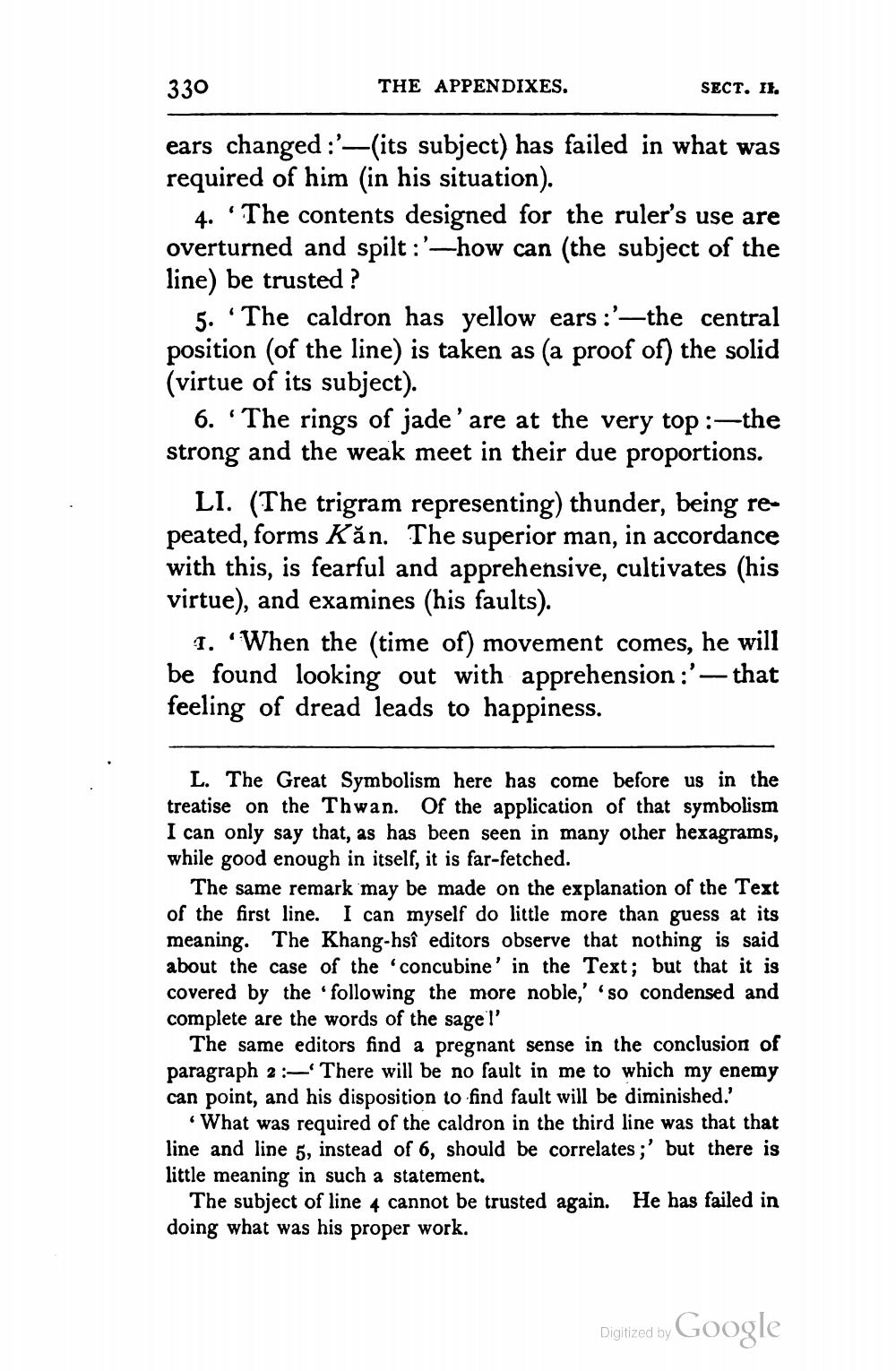________________
330
THE APPENDIXES.
SECT. 11.
ears changed:'-(its subject) has failed in what was required of him (in his situation).
4. The contents designed for the ruler's use are overturned and spilt :'-how can (the subject of the line) be trusted ?
5. “The caldron has yellow ears :'—the central position (of the line) is taken as (a proof of) the solid (virtue of its subject).
6. •The rings of jade’are at the very top:-the strong and the weak meet in their due proportions.
LI. (The trigram representing) thunder, being repeated, forms Kăn. The superior man, in accordance with this, is fearful and apprehensive, cultivates (his virtue), and examines (his faults).
1. When the time of) movement comes, he will be found looking out with apprehension :'- that feeling of dread leads to happiness.
L. The Great Symbolism here has come before us in the treatise on the Thwan. Of the application of that symbolism I can only say that, as has been seen in many other hexagrams, while good enough in itself, it is far-fetched.
The same remark may be made on the explanation of the Text of the first line. I can myself do little more than guess at its meaning. The Khang-hsî editors observe that nothing is said about the case of the concubine' in the Text; but that it is covered by the following the more noble,' 'so condensed and complete are the words of the sagel'
The same editors find a pregnant sense in the conclusion of paragraph 2: There will be no fault in me to which my enemy can point, and his disposition to find fault will be diminished.
What was required of the caldron in the third line was that that line and line 5, instead of 6, should be correlates ;' but there is little meaning in such a statement.
The subject of line 4 cannot be trusted again. He has failed in doing what was his proper work.
Diglized by Google




